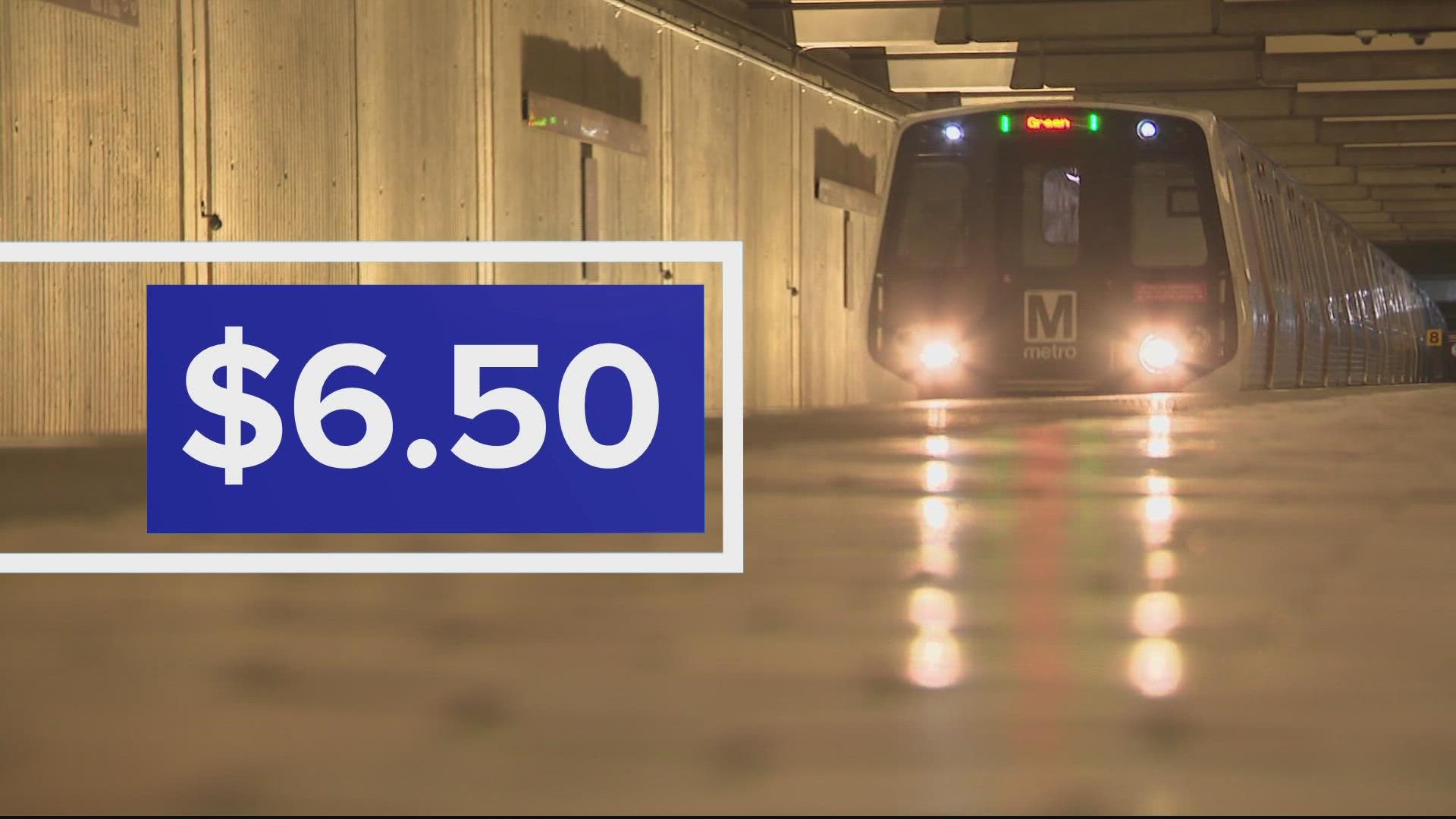WASHINGTON — Metrorail’s Yellow Line will end at Mt. Vernon Square under a new plan proposed by WMATA General Manager Randy Clarke. Metro leaders said this change will improve service for 49% of all Metrorail riders by shortening waits on the Green and Yellow lines between Mt. Vernon Square and Huntington.
Metro’s numbers show the proposal would negatively impact 8% of riders who used to ride the Yellow Line north of Mt. Vernon Square and would now need to transfer to the Green Line to continue to Greenbelt station. WMATA numbers indicate that for a person leaving Anacostia station, the number or job sites accessible within a 30-minute train ride now increase by 25%. Riders entering Metrorail at Braddock Road station have a similar 15% increase in service on the Yellow Line.
Metro officials added the increased service on the Green Line and quicker transfers would mean quicker Metrorail trips to Nationals Park for most riders. These changes are contingent on all 7000 series trains returning to service in the coming months. Metro’s new budget calls for trains every 3 to 6 minutes in the core area and 8 to 12 minutes in the outer edges of the system.
"I approve because that’s necessary. I feel like because this is, so they say, 'the lower side of town,' we shouldn’t have to suffer. We pay just as much as everybody else," said Yolanda Penny alongside her caregiver while waiting at Anacostia Metrorail station. "They’re building up a lot everywhere, especially over on this side. So I think that will help and get more people to move to this side of town."
Calls to resume the Red Line turnback at Grosvenor Station were rejected for now. Metro officials say they want to wait and see train wait times once all 7000 series trains return to service.
If WMATA’s board approves management’s budget, low-income riders would receive a 50% discount, matching the discount received by senior and disabled riders on Metrobus and Metrorail. Customers would qualify based on enrollment in Supplemental Nutrition Assistance Program. Metro officials say people must be enrolled in SNAP to qualify, and that criteria were chosen as the simplest solution to determine need. The program would cost $4 million according to the budget proposal. Metro officials added that DC Council’s current bill to make all DC Metro busses free is “connected, but not dependent” on Metro’s “Regional Low-Income Fare Program.”
Fares for Metrorail and Metrobus would also be simplified. Currently, peak hour rates are between $2.25 and $6 dependent on miles traveled. Off-peak weekday travel is currently between $2 and $3.85. The new proposal would eliminate peak and off-peak hours and make rides cost between $2 and $6.50. All late-night and weekend travel would remain $2 no matter the distance. This would increase rates for people who currently use bus or rail for long distances during off-peak hours as their maximum rate now increased from $3.85 to $6.50. WMATA calculates this as a 5% overall rate increase.

